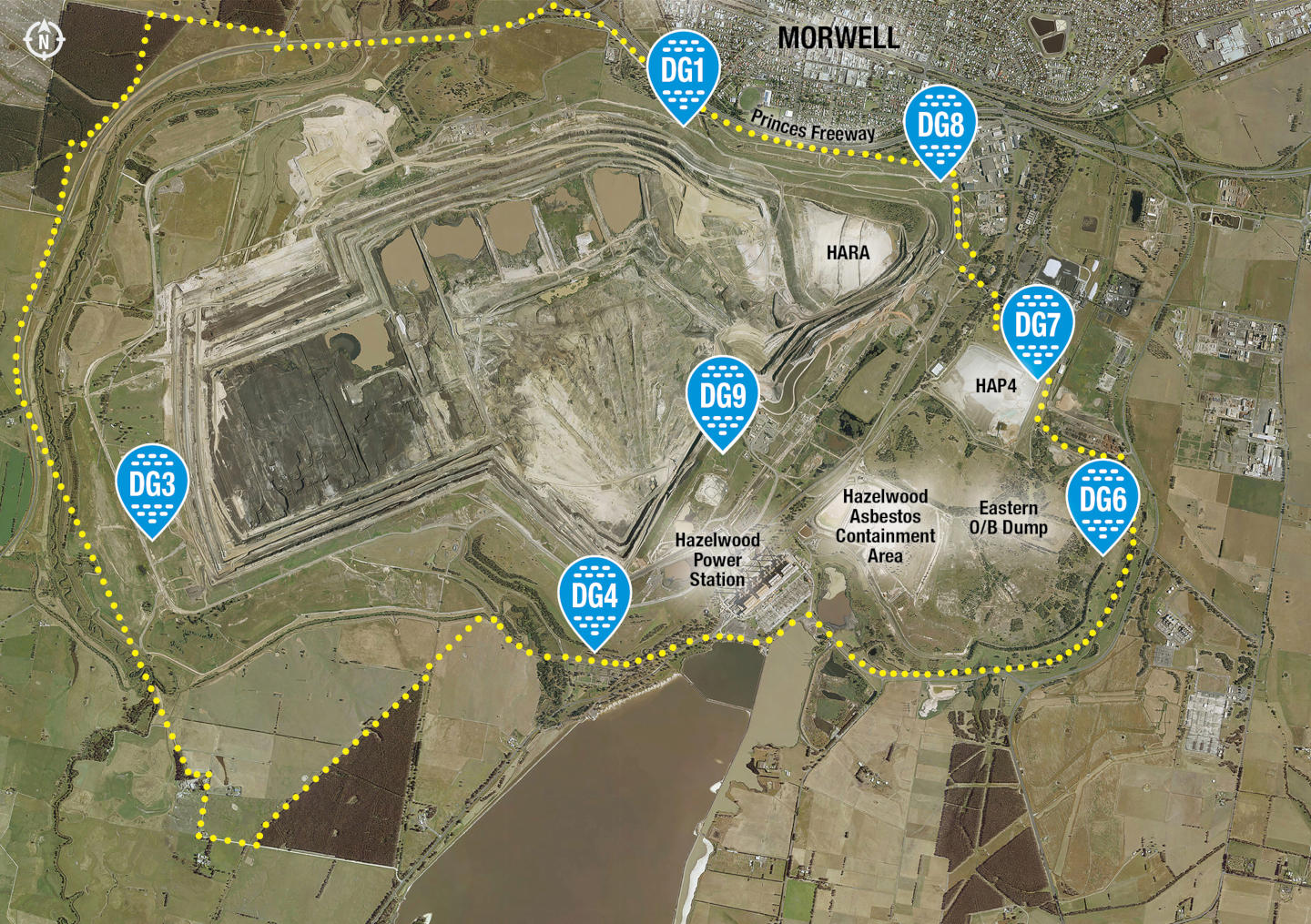This ENGIE Hazelwood Air Quality Monitoring website provides daily information from an extensive monitoring network across the Hazelwood Rehabilitation Project Site (Hazelwood Site). The Hazelwood Site includes the decommissioned Power Station, the EPA Licenced Asbestos Containment Area and the Hazelwood Mine. The air quality monitoring was historically focused on four areas – mine dust, demolition dust, demolition dust for hourly trends and asbestos monitoring. Since January 2022, only mine dust monitoring has been carried out.
This website provides open and transparent information about dust to our community and is part of ENGIE Hazelwood’s commitment to keep the local community informed about demolition and rehabilitation activities across the Hazelwood Site. Read more...
Dust is also measured by the Environment Protection Authority (EPA) in the Latrobe Valley. To compare data on this website with that measured by EPA in the region, check EPA AirWatch.
Mine Dust Monitoring

Note: dust monitor locations DG2 and DG5 are historic locations and are no longer monitored.
There are seven air quality monitors for PM10 (coarse dust) and PM2.5 (fine dust) located around the Mine Rehabilitation Project. The most recent daily averages are shown below and data collected over the previous week is presented in the graphs. The latest 24-hour average of PM10 and PM2.5 is calculated and presented daily.
Dust arising from activities at the Hazelwood Rehabilitation Project is compared to the objectives set by the Environmental Reference Standard (ERS) for Ambient Air:
- Concentrations of PM10 to be less than 50 µg/m3 as a 24-hour average
- Concentrations of PM2.5 to be less than 25 µg/m3 as a 24-hour average
Latest 24-hour averages
DG1
DG3
DG4
DG6
DG7
DG8
DG9
Weekly data
PM10 (coarse dust)
PM10 (coarse dust)
Data unavailable
The monitor may be experiencing technical issues or undergoing maintenance
PM10 (coarse dust)
PM10 (coarse dust)
PM10 (coarse dust)
PM10 (coarse dust)
PM10 (coarse dust)
PM2.5 (fine dust)
PM2.5 (fine dust)
Data unavailable
The monitor may be experiencing technical issues or undergoing maintenance
PM2.5 (fine dust)
PM2.5 (fine dust)
PM2.5 (fine dust)
PM2.5 (fine dust)
PM2.5 (fine dust)
Disclaimer
Particulate matter data that is presented on this website is collected in real-time and is unvalidated. Data may be affected by instrument error and/or external influences such as prescribed burns.

